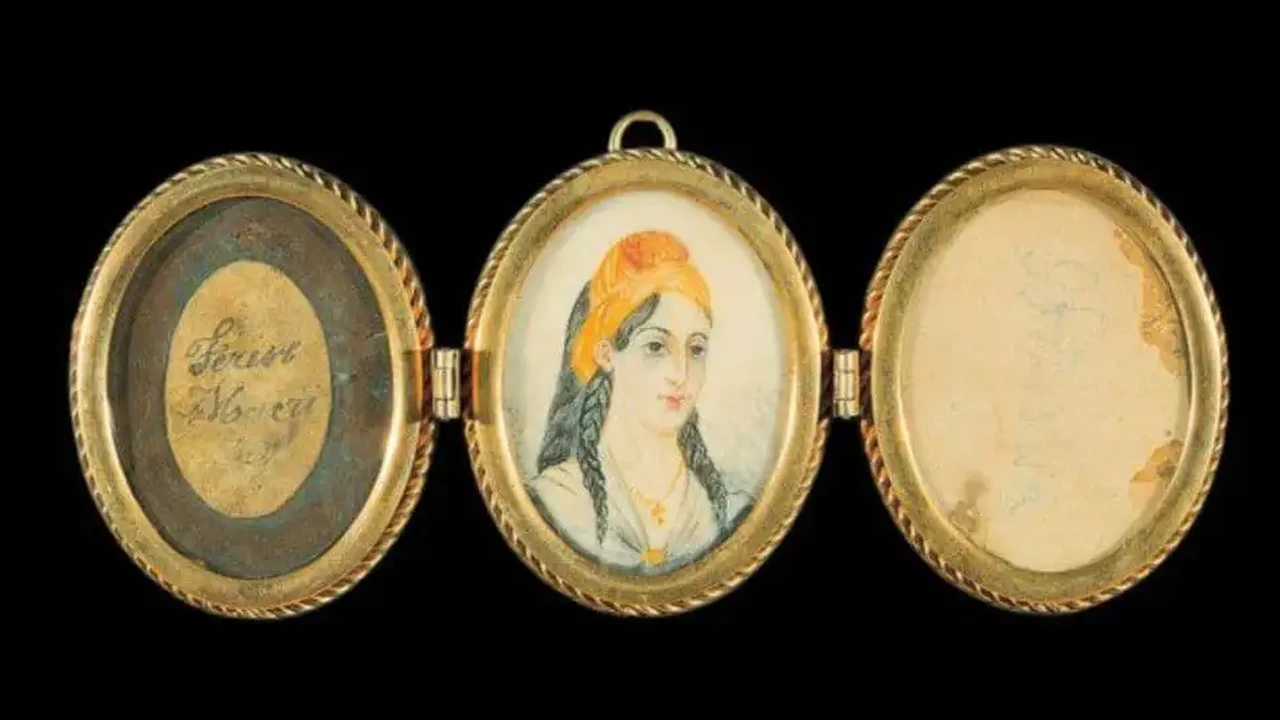Spotting Fake Antique Jewelry Red Flags to Watch Out For
Spotting Fake Antique Jewelry Red Flags to Watch Out For

Introduction to Identifying Fake Antique Jewelry
Let's be honest, nobody wants to get duped when buying antique jewelry. The thrill of owning a piece of history can quickly turn sour if you realize it’s a cleverly disguised modern replica. The antique jewelry market, while brimming with unique treasures, also has its fair share of fakes. This guide is your armor, equipping you with the knowledge to spot those red flags and protect your wallet and your passion.
Understanding the Allure of Antique Jewelry and Why Fakes Exist
Antique jewelry holds a certain magic. It's not just about the materials; it's about the stories they carry, the craftsmanship of bygone eras, and the unique designs that you just can't find anywhere else. This allure, coupled with the high value of genuine antique pieces, creates a tempting market for counterfeiters. They aim to capitalize on the demand by producing pieces that mimic the look and feel of authentic antiques, often using cheaper materials and modern techniques.
Red Flag 1 Hallmarks and Maker's Marks The First Line of Defense
Hallmarks are like the fingerprints of antique jewelry. They’re tiny stamps that indicate the metal content (like gold or silver purity), the maker, and sometimes even the date or location of manufacture. A missing, illegible, or inconsistent hallmark is a major red flag. For example, if a piece claims to be 18k gold but has no hallmark indicating gold content, proceed with caution. Or, if the hallmark looks poorly stamped or blurry, it could be a sign of a fake. Research common hallmarks from the era the piece is supposedly from. Websites like 925-1000.com are invaluable resources.
Red Flag 2 Material Inconsistencies Spotting Fake Gold Silver and Gemstones
Antique jewelry was made with specific materials characteristic of the period. A piece claiming to be Victorian-era gold jewelry but using modern alloys or base metals should raise suspicion. Similarly, pay attention to gemstones. Are they the correct type and cut for the era? For example, early diamonds were typically cut with 'old mine' or 'old European' cuts, which have a different appearance than modern brilliant cuts. The presence of synthetic gemstones in a piece that should contain natural stones is another clear indicator of a fake. Use a jeweler's loupe to examine the gemstones closely for imperfections or signs of artificial creation. Also, consider the weight of the piece. Fakes are often lighter than genuine antiques due to the use of cheaper materials.
Red Flag 3 Construction and Manufacturing Techniques Modern vs Antique
Antique jewelry was handcrafted using techniques that differ significantly from modern mass-production methods. Look for signs of handcraftsmanship, such as slight imperfections in the setting, tool marks, or variations in the design. Perfectly symmetrical and flawless pieces are more likely to be modern replicas. Pay close attention to the soldering and joints. Antique jewelry often used different soldering techniques, and the joints might not be as seamless as those found in modern pieces. The use of laser welding, which is a relatively recent technology, is a dead giveaway that the piece is not authentic.
Red Flag 4 Condition Too Good to Be True Or Artificially Aged
Antique jewelry, by its very nature, will show signs of wear and tear. A piece that looks brand new and pristine, with no scratches, dents, or patina, is highly suspect. While some restoration is acceptable, a complete lack of age-related wear can indicate that the piece is a modern reproduction. Conversely, some counterfeiters attempt to artificially age their creations. Look for inconsistencies in the aging process, such as overly aggressive polishing that removes details or an unnatural patina that looks forced or uneven. Genuine patina develops slowly over time and has a distinct, subtle appearance.
Red Flag 5 Price Too Low A Warning Sign of Fake Antique Jewelry
If the price seems too good to be true, it probably is. Antique jewelry, especially pieces with valuable gemstones or historical significance, commands a certain price point. Research the market value of similar pieces to get a sense of what you should expect to pay. A significantly lower price than the going rate is a major red flag. It could indicate that the piece is a fake, or that it has been misrepresented in some way. Be wary of deals that seem too good to pass up, and always do your homework before making a purchase.
Red Flag 6 The Seller's Reputation and Return Policies
Buy from reputable dealers and sources. Research the seller's history, read reviews, and check their credentials. A reputable dealer will have a deep knowledge of antique jewelry and be willing to answer your questions thoroughly and honestly. Be wary of sellers who are evasive or unwilling to provide detailed information about the piece. Always insist on a return policy. A reputable seller will stand behind their products and offer a refund if the piece is not as described. If a seller refuses to offer a return policy, it's a major red flag.
Spotting Fakes in Specific Antique Jewelry Styles
Victorian Era Jewelry Fake Detection
Victorian jewelry is often faked. Look for the correct types of metals (gold, silver, jet, vulcanite). Common fakes use base metals plated with a thin layer of gold. Check for hallmarks indicating gold content. Also, examine the intricate designs. Victorian jewelry was often highly detailed, and fakes may lack the same level of craftsmanship. For example, a locket claiming to be Victorian might have a poorly rendered portrait or a flimsy hinge.
Art Deco Era Jewelry Fake Detection
Art Deco jewelry is known for its geometric designs, bold colors, and use of materials like diamonds, sapphires, and onyx. Fakes often use cheaper, synthetic gemstones or poorly cut diamonds. Check for the quality of the stones and the precision of the geometric patterns. Also, examine the settings. Art Deco jewelry often used platinum or white gold, so a piece claiming to be Art Deco but made of yellow gold should raise suspicion. A common fake is a poorly constructed piece with glued-on rhinestones instead of genuine gemstones.
Estate Jewelry Fake Detection
Estate jewelry can span many eras, making authentication tricky. Focus on hallmarks, material consistency, and the overall condition of the piece. Be especially wary of estate jewelry with 'signed' pieces. Verify the signature against known examples and check for any signs of tampering or alteration. For example, a brooch claiming to be a signed Chanel piece might have a poorly stamped or misspelled signature.
Recommended Products and Comparisons
Example 1 Victorian Mourning Locket
Genuine: Victorian Jet Mourning Locket, crafted from genuine jet, featuring intricate hand-carved details and a compartment for a photograph or lock of hair. Price: $800-$1200 (depending on condition and details). Fake: Plastic Locket, molded to resemble jet, with poorly defined details and a flimsy hinge. Price: $50-$100. How to Spot: Genuine jet is heavier and has a smooth, slightly waxy feel. Plastic is lighter and may have mold marks.
Example 2 Art Deco Diamond Bracelet
Genuine: Art Deco Platinum Diamond Bracelet, featuring old European cut diamonds set in intricate geometric patterns. Price: $5000-$10000 (depending on diamond quality and design). Fake: Silver Bracelet with Cubic Zirconia, mimicking the Art Deco style but lacking the brilliance and fire of genuine diamonds. Price: $200-$500. How to Spot: Use a jeweler's loupe to examine the diamonds. Cubic zirconia will have a different refractive index and sparkle compared to diamonds.
Example 3 Antique Pearl Necklace
Genuine: Antique Pearl Necklace, featuring natural pearls with a unique luster and subtle imperfections. Price: $1500-$3000 (depending on pearl size and quality). Fake: Imitation Pearl Necklace, made from plastic or glass beads with a painted or coated surface. Price: $50-$100. How to Spot: Natural pearls will have slight variations in size and shape, and a unique luster. Imitation pearls will be perfectly uniform and have a less vibrant appearance. Also, rub the pearls gently against your teeth. Natural pearls will feel slightly gritty, while imitation pearls will feel smooth.
Practical Tips for Buying Antique Jewelry Safely
- Do Your Research: Before you even start shopping, educate yourself about the styles, materials, and hallmarks of the eras you're interested in.
- Ask Questions: Don't be afraid to ask the seller detailed questions about the piece's history, provenance, and condition.
- Examine Carefully: Use a jeweler's loupe to examine the piece closely for hallmarks, material inconsistencies, and signs of wear.
- Trust Your Gut: If something feels off, don't hesitate to walk away.
- Get an Appraisal: If you're making a significant purchase, consider getting an independent appraisal to verify the piece's authenticity and value.
:max_bytes(150000):strip_icc()/277019-baked-pork-chops-with-cream-of-mushroom-soup-DDMFS-beauty-4x3-BG-7505-5762b731cf30447d9cbbbbbf387beafa.jpg)






